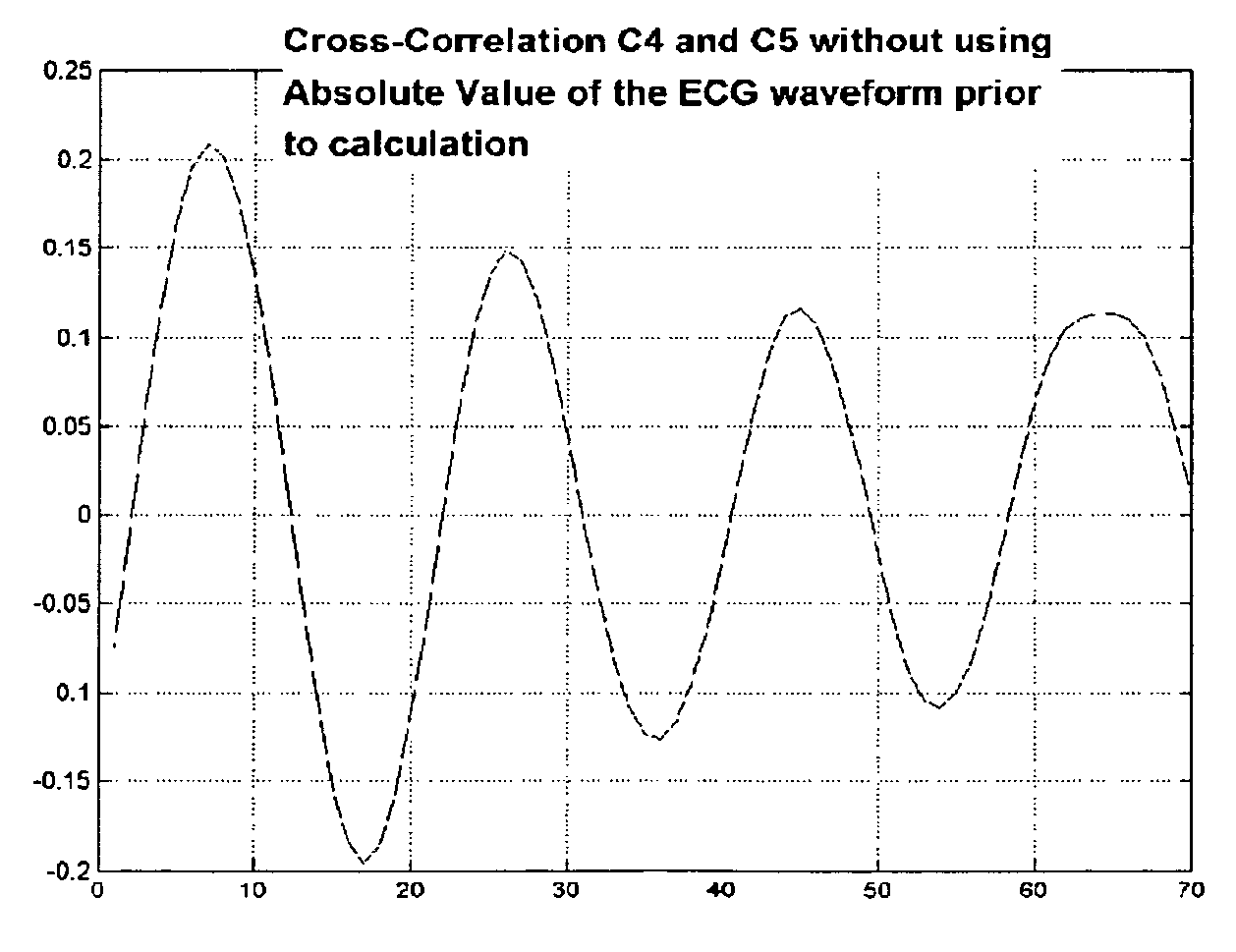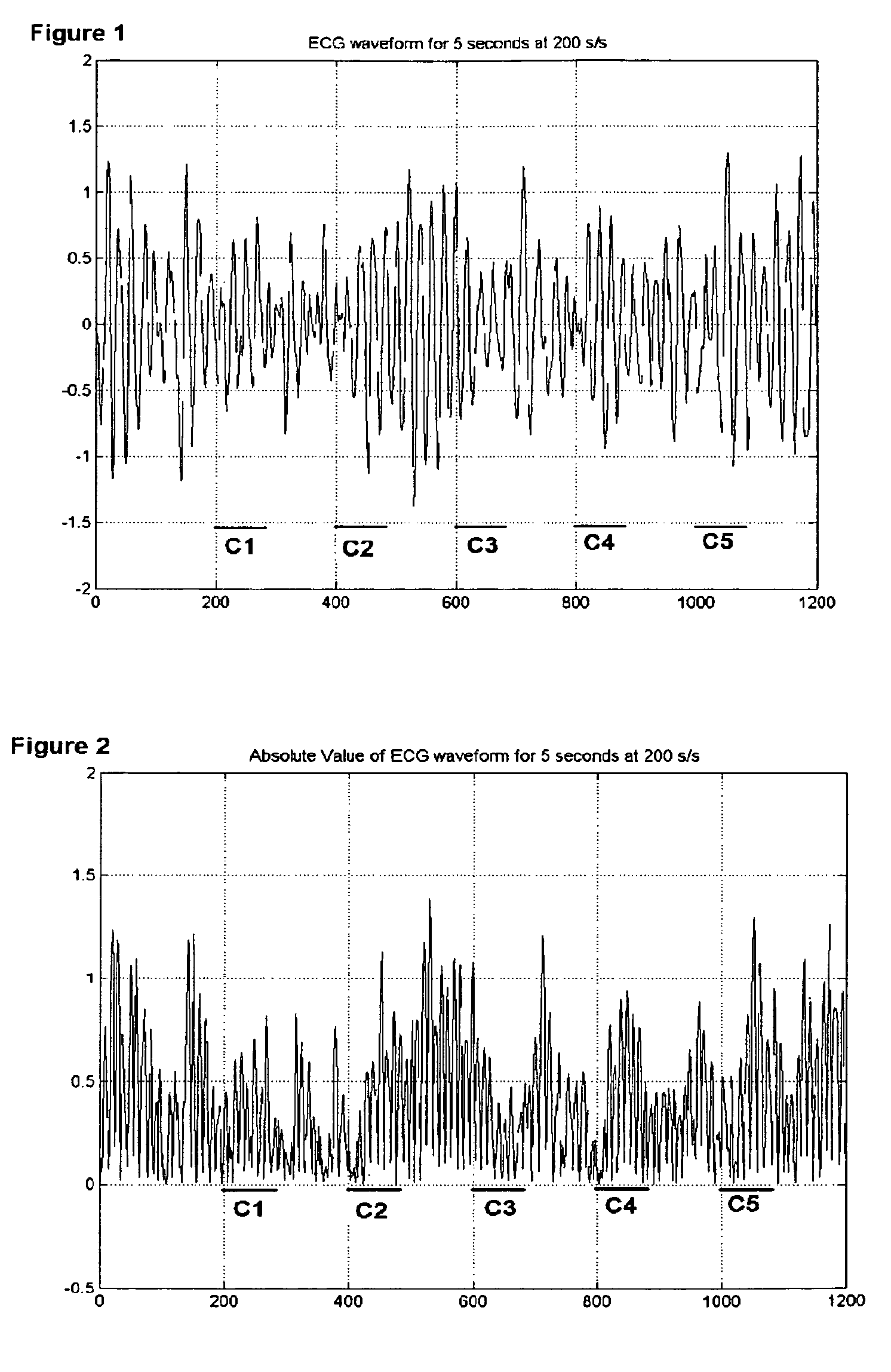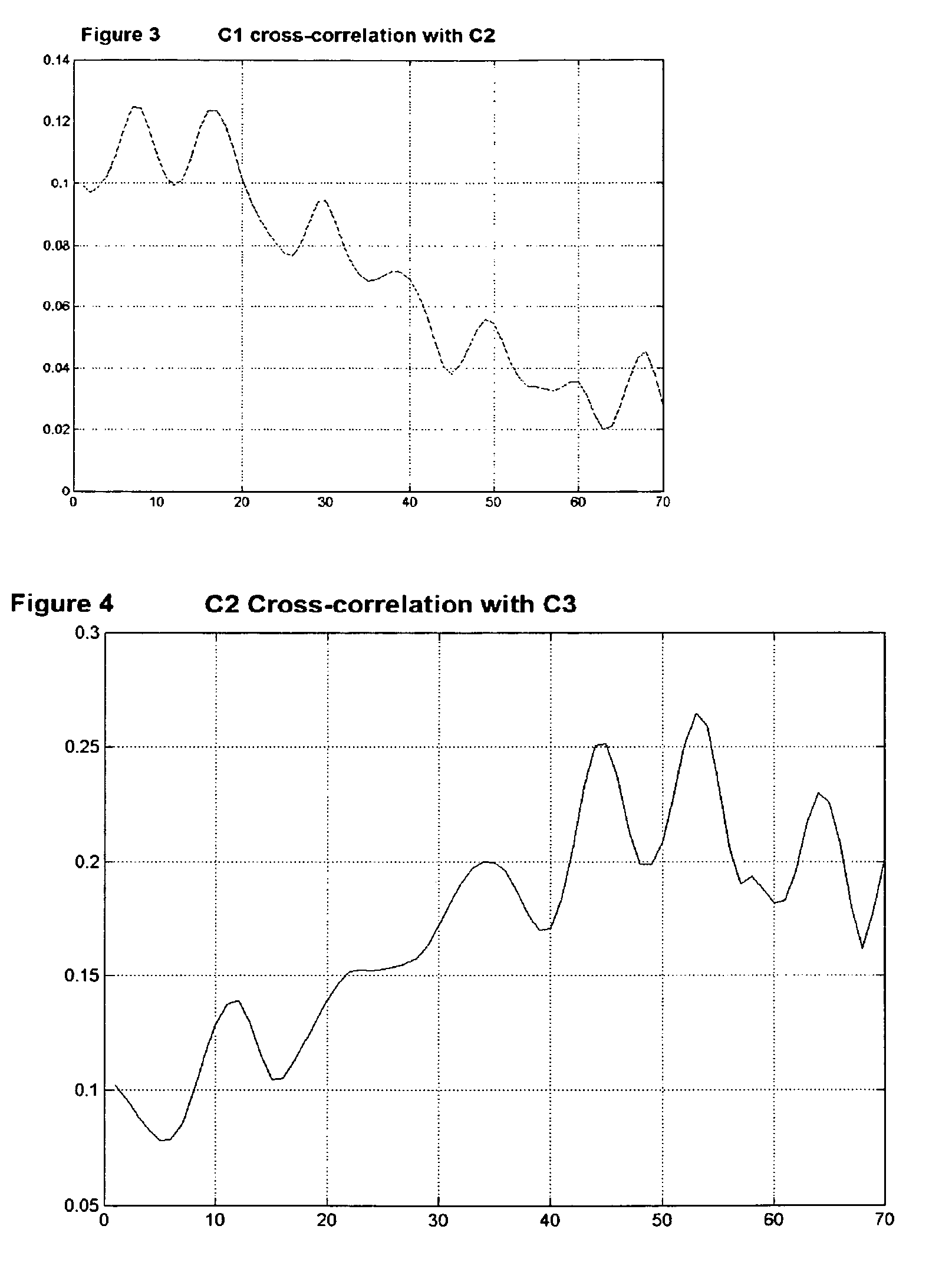Methods and devices to characterize the probability of successful defibrillation and determine treatments for ventricular fibrillation
a probability and probability technology, applied in the field of cardiac rhythm characterization, can solve the problems of decreased survival rate, detrimental defibrillation, and decreased survival ra
- Summary
- Abstract
- Description
- Claims
- Application Information
AI Technical Summary
Benefits of technology
Problems solved by technology
Method used
Image
Examples
Embodiment Construction
[0055]In studies of the present invention, the ability of the LAC (alone or in combination with the angular velocity) to predict or determine a state, phase or class of ventricular fibrillation as modeled by the duration of ventricular fibrillation was determined. It was compared to the scaling exponent which appears to measure some of the same underlying characteristics of the ventricular fibrillation waveform, but which requires recording conditions which are not present in monitors and defibrillators in current use. Specifically, the scaling exponent does not produce useful results at sampling rates below 125 / second or with filtering below 60 hertz. The LAC is unaffected at these sampling rates and low pass filtering conditions.
[0056]In a study of the present invention, a classification system including two classes of ventricular fibrillation were used. In the first class of less than 5 minutes duration, defibrillation is likely to be successful and in the second class of over 5 ...
PUM
 Login to View More
Login to View More Abstract
Description
Claims
Application Information
 Login to View More
Login to View More - R&D
- Intellectual Property
- Life Sciences
- Materials
- Tech Scout
- Unparalleled Data Quality
- Higher Quality Content
- 60% Fewer Hallucinations
Browse by: Latest US Patents, China's latest patents, Technical Efficacy Thesaurus, Application Domain, Technology Topic, Popular Technical Reports.
© 2025 PatSnap. All rights reserved.Legal|Privacy policy|Modern Slavery Act Transparency Statement|Sitemap|About US| Contact US: help@patsnap.com



